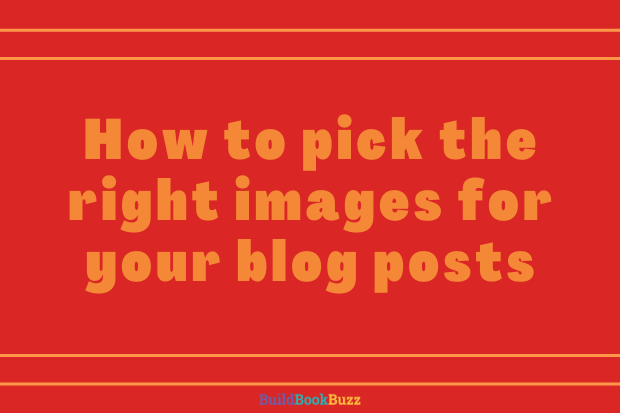How to pick the right images for your blog posts
Today’s guest post is by Mridu Khullar Relph, a freelance journalist and writer who has written for The New York Times, Time, The Christian Science Monitor, Ms., and more. She’s a big believer in letting images tell your story. View her story on her website or sign up for her newsletter to get a free copy of her e-book 21 Query Letters That Sold.
How to pick the right images for your blog posts
By Mridu Khullar Relph
When I was a lowly sub at a magazine many years ago, I sometimes wrote and edited as much as half of this (small magazine’s) entire content. Yet, if you asked me where most of my time went, I’d tell you that I spent about half my day researching, writing, and putting together stories and the remaining half on presentation.
That’s right, I spent half my time, each and every day, coordinating with the designers, discussing layouts, helping identify text that needed to stand out on the page, playing about with different fonts, analyzing all the different covers the designers had come up with and vocalizing why they worked or didn’t, and mostly, sourcing the right images.
In your blog, too, images are important. It’s been shown repeatedly that bright, interesting, and relevant images tend to draw in more readers than blog posts without images or those with boring and overdone ones.
Here are six ways to ensure you’re picking the right images for your blog that help to challenge, inspire, and surprise your readers.
1. Don’t be too literal.
A couple of months ago, when our own Sandy Beckwith guest posted on my blog about nonfiction platforms, I chose this picture of a guy getting ready to jump because not only did it signify the “literal” platform, but it captured what most writers feel when we’re talking about building a platform– that they have to take a deep breath and just jump.
2. Pick people over things.
When I started working at the magazine I mentioned above, the leadership changed. The new editor was charged with taking the magazine from a technology magazine for geeks to a lifestyle magazine for people who wanted to know how to pick their next gadget. The first thing he did? He put models on the cover.
People respond to people. It’s human nature. So given the choice between a dozen envelopes ready for the mail and a baby chewing on a marketing book, you now know which image to pick.
3. Choose beauty over accuracy.
 Images aren’t about fact, they’re about feeling (unless you’re publishing a newspaper). Take this post on the levels of commitment by Jeff Goins, for instance. It features a beautiful image that draws the reader in immediately and works perfectly for this post. But if you looked at the image in isolation, “commitment” isn’t the first word that would come to mind.
Images aren’t about fact, they’re about feeling (unless you’re publishing a newspaper). Take this post on the levels of commitment by Jeff Goins, for instance. It features a beautiful image that draws the reader in immediately and works perfectly for this post. But if you looked at the image in isolation, “commitment” isn’t the first word that would come to mind.
4. Make it personal.
There are blogs I’ve been reading for years where I can’t tell you one thing about the person writing it. Others where I feel like I know the writer personally. Guess which one I’m going to trust more? Once in a while, make it a point to post a picture of something that makes you uniquely YOU.
For instance, I write a regular “What I’m Reading” post on my blog in which I always get my dog, my cat, and now my baby, to post with one of the books I’m reading. The cuteness factor is really high and readers absolutely adore it.
5. Bigger is better.
Some bloggers like to have tiny images on the side, which is fine if that works for your content or your design. And it can be, like on this blog, more important to keep readers focused on the words.
But if your blog is more in a narrative conversational style like that of say, Michael Hyatt, make your images “pop.”
6. Match the tone of your pictures to the tone of your text.
If you blog about serious topics, say addiction or crime, you need to use serious images, no cats, dogs, or monkeys allowed. But if you’ve got a more personal style, like my own, and you talk to your readers regularly and they feel like they’re just hanging out with you, you need a different set of pictures entirely. As writers, we focus so much on voice that we forget how much images need to connect with that voice.
How much thought do you give to the images you use on your blog?
Like what you’re reading? Get it delivered to your inbox every week by subscribing to the free Build Book Buzz newsletter. You’ll also get my free “Top 5 Free Book Promotion Resources” cheat sheet immediately!



Blog pictures certainly define the tone and composition of an entry and with the amount of great pictures out there it’s an easy addition to any blogger’s post. However, what isn’t mentioned here (because it could most likely fill a whole blog post) are the legal ramifications of using all those great pictures on blogs and articles. Last year I read an insightful article about this. While it doesn’t happen very often, it’s important to be mindful of what images you are posting. http://www.roniloren.com/blog/2012/7/20/bloggers-beware-you-can-get-sued-for-using-pics-on-your-blog.html
Hi Rachel, thanks for your comment and yep, I agree it’s an important issue that needs a discussion all on its own. I didn’t read that piece you linked to, but I think it’s important for writers to recognize copyright when it comes to images, not only crediting but making sure they understand the license under which they’re allowed to use a picture. I love morguefile.com because it’s a no-strings-attached service and yes, it’s a tiny bit limited, but I usually manage to find exactly what I’m looking for.
Thanks, Rachel. The focus of this piece is on the power of images in blog posts, not on where to find them or how to make sure you can use them w/out infringing on copyright. That’s an important topic, though, and one that deserves its own blog post. Thanks for the link!
Sandy
Same thought: a powerful image is so important … as long as you have permission to use it!
(of course, if you keep it personal, as you say in #4 on your list, then you will have permission … it will by your image!)
Exactly, Rhonda. And I love taking pix specifically for blog posts, so it’s a two-fer.
Sandy
Thanks, Mridu! I’m not a visual person, so your tips are helpful. I tend toward being too literal.
I’m too literal, too, Susan, so these were also helpful for me. They gave me a lot to think about.
Sandy
Really glad these helped, Susan and Sandra.
Great tips. I’m just started to get my feet wet, and creating my ‘web presence’, so need all the help I can get!
I’m glad Mridu’s advice was helpful, Gayle. I learned from her tips, too.
Sandy
Happy to be of help, Gayle.
Thanks for the tips, I have been starting to use more pics in my blog, mainly my own, but really appreciate the ideas of not making them too literal, in favour of more personal and perhaps adding more people. Definately food for thought.
I’ve started using more of my own pix, too, Sandra. I either look for something I’ve shot already that fits what I need, or, when possible, I shoot something special. It’s fun! How do you handle it?
Sandy
The same as you. Either find something amongst the thousands of photos I have stored on my computer or take one especially for what I am writing. I am always thinking about the next blog, so keep in mind the possibilites for photos too. My stumbling block now is going to be adding people which so far I have avoided.
I worry that the people in my pictures won’t want to show up on my blog so for people pictures, I use other sources.
Sandy
This is a valid concern and I actually don’t use pictures of my family and friends regularly for this reason (unless I’ve asked them). When it comes to people pictures, you can find tons of free ones using Wikimedia Commons (http://commons.wikimedia.org/wiki/Commons:Picture_of_the_day) or morguefile.com. Flickr is really good for that, too, but don’t forget to take note of licenses and to give proper credit.
Glad the post helped!
Thanks for the references Mridu, I’m sure they will be very usefu. 🙂
Thanks for the insights. Selecting images has always been a weak spot for me. I usually just don’t bother because the process is so time consuming. It can take as long to find an image as it does to write the post!
As others have said, I’m way to literal, so I can rarely find the image I want. I’ll have to work on that. Maybe looking for the right “feeling” will be easier.
That’s interesting, Jim. I really like selecting images, but I agree that it’s time-consuming.
Sandy
I agree that it’s a really time-consuming process, James. However, it can sometimes mean the difference between someone reading your post and not, so I think it’s worth the investment, especially if you’ve spent time crafting your post to perfection.